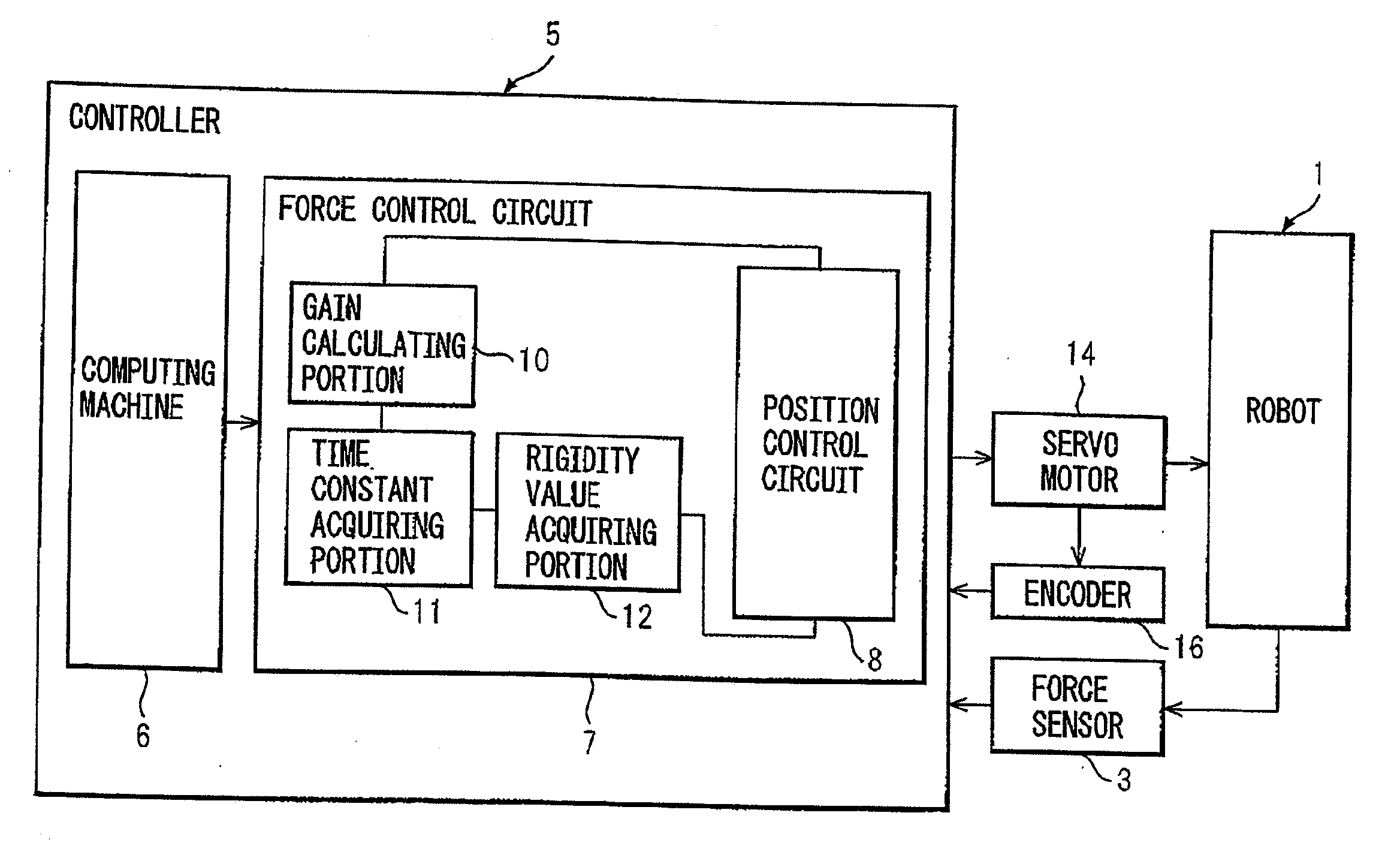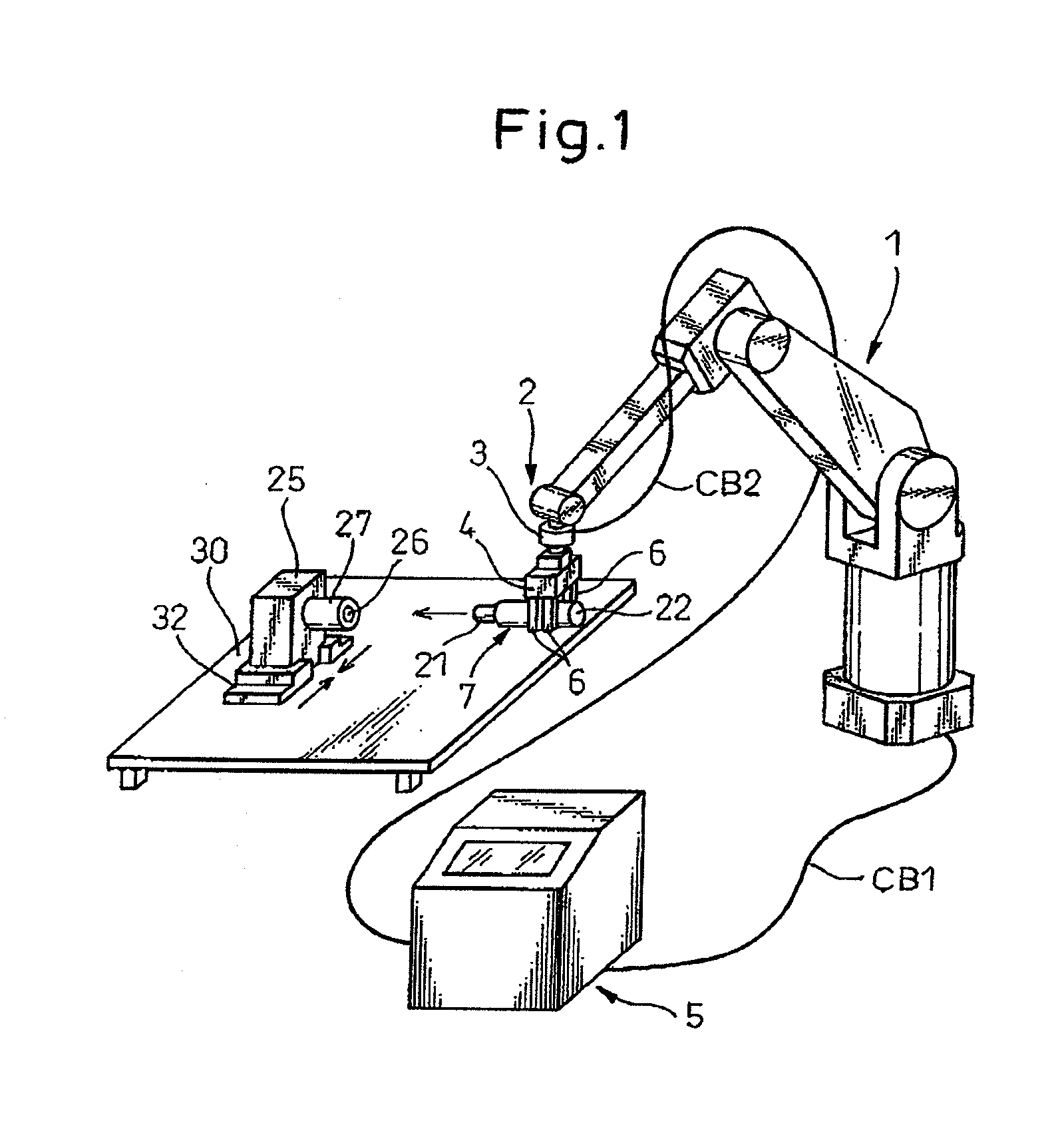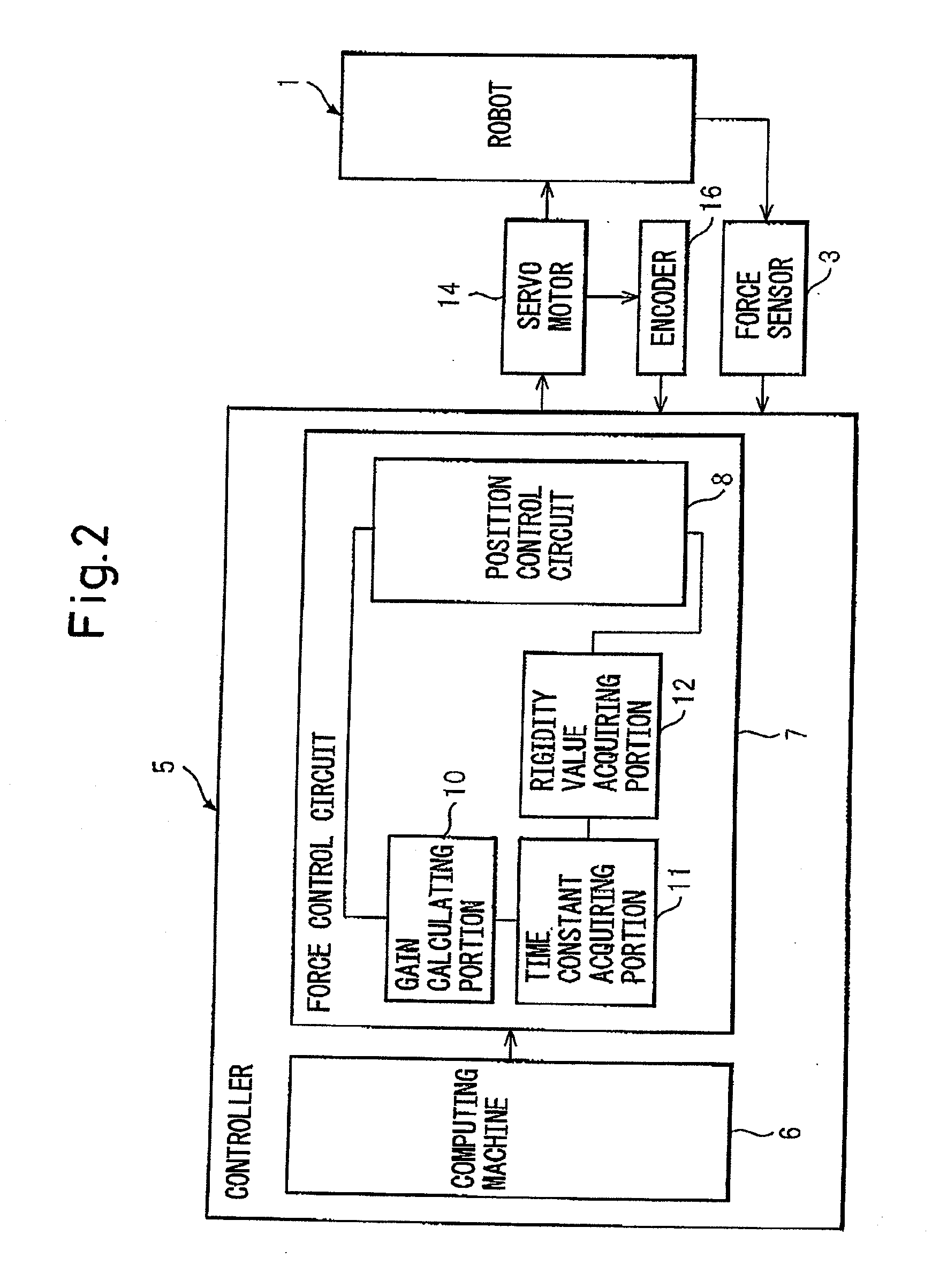Controller
a controller and control panel technology, applied in the field of controllers, can solve the problems of time and skill, damage to the robot or machine performing the work or to the hand tool attached to the machine, the workpiece being worked on, and the time-consuming adjustment of the adjustment, so as to achieve the gain adjustment the effect of widespread use of the damping control
- Summary
- Abstract
- Description
- Claims
- Application Information
AI Technical Summary
Benefits of technology
Problems solved by technology
Method used
Image
Examples
Embodiment Construction
[0027]A robot controller (controller) according to the present invention will be described with reference to the drawings. FIG. 1 shows a six-axis robot as a controlled object which has three translational axes and three rotational axes. A controller for force-controlling a robot such as shown here can be classified into two main types of system: one is a system having a position control circuit connected in series inside the force control circuit, and the other is a system having a position control circuit connected in parallel outside the force control circuit. The controller according to the present invention (FIG. 2) is based on the system having a position control circuit connected in series inside the force control circuit (see FIG. 3), and is configured to be able to force-control the contact that the robot makes with the workpiece and to automatically set the force control gain based on the time constant (delay) of the position control circuit and the combined rigidity of th...
PUM
 Login to View More
Login to View More Abstract
Description
Claims
Application Information
 Login to View More
Login to View More - R&D
- Intellectual Property
- Life Sciences
- Materials
- Tech Scout
- Unparalleled Data Quality
- Higher Quality Content
- 60% Fewer Hallucinations
Browse by: Latest US Patents, China's latest patents, Technical Efficacy Thesaurus, Application Domain, Technology Topic, Popular Technical Reports.
© 2025 PatSnap. All rights reserved.Legal|Privacy policy|Modern Slavery Act Transparency Statement|Sitemap|About US| Contact US: help@patsnap.com



